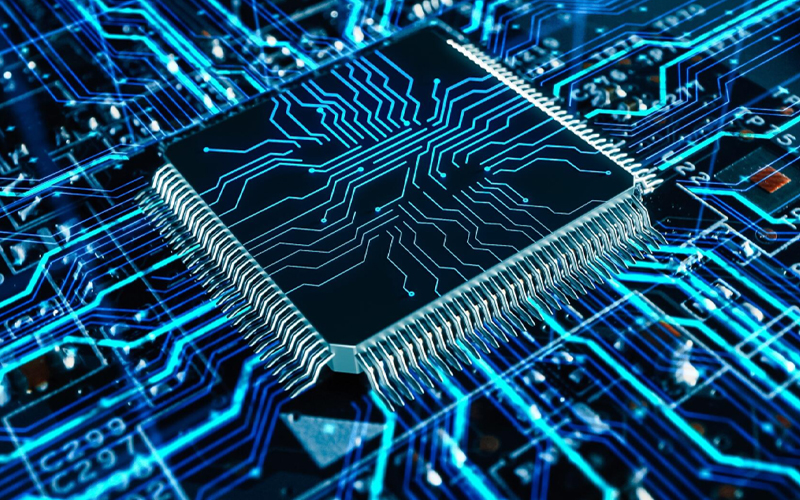Technologies like Artificial Intelligence (AI) or the Internet of Things (IoT) are becoming ingrained in our day-to-day lives. Think of Alexa and other assistants, or our smartphone’s facial security feature. These are examples of the innovations of the present-day Fourth Industrial Revolution.
The term “Fourth Industrial Revolution” was coined by Klaus Schwab, founder of the World Economic Forum to describe an era marked by “technological revolution that is blurring the lines between the physical, digital, and biological spheres.”
To understand Industry 4.0 better, let’s travel back in time to Industry 1.0.
Industries through the ages
The 1st industrial revolution started in Great Britain in 1760, powered by the invention of steam engines. The result? The boom of the textile industry, a revolution in manufacturing processes, and the creation of factories.
In the late 1800s, the 2nd industrial revolution began. This period saw the invention of internal combustion engines, transportation vehicles, the light bulb and the telephone. Industries like steel, oil, and electricity flourished.
The 3rd industrial revolution, also known as the digital revolution, occurred in the latter half of the 20th century. This era was marked by the invention of electronics, computers and the internet. Factories were automated and machines were controlled with PLCs (Programmable Logic Controller).
Now, we are in Industry 4.0. What distinguishes the 4th industrial revolution from the 3rd?
The Fourth Industrial Revolution
According to experts, it is technology’s role in our lives that is the differentiator. Today, tech-enabled devices are increasingly intertwined with human life, and technical development is occurring at a much faster rate than in the past.
Consider this: It took 75 years for 100 million people to use the telephone, but Instagram had that many users in only two years and Pokemon Go had that many in just one month.
Today, you can have a 3D-printed hip bone replacement or a 3D-printed bionic arm. What a blurring of the lines between humans and technology!
Will machines replace humans?
Have you seen videos of Amazon’s “smart” warehouse? A slew of robots move about the floor picking and placing pillars of merchandise in designated places.
These intelligent machines may give the impression that humans have been supplanted, but the reality is quite different. Humans have never been more crucial to manufacturing than now.
How so? According to a study, as machines take over routine, physically demanding jobs, they free up human resources who can move on to roles where complex reasoning is required.
Automation has scooped up all of the no-brainer tasks. What is left for humans are activities that are too sophisticated for robots to do. The current production scenario of high-mix assemblies, short product cycles, and tight regulatory standards puts increased cognitive stress on factory workers.
Prior to the advent of intelligent devices, human-handled machines would carry out monotonous jobs. Workers manning the machines needed to be trained once and could carry on for years without needing extensive refresher courses. But, with the emergence of new technologies, this has altered dramatically.
The rapid rate at which new technologies are flooding the shop floor is rendering present skill sets obsolete in less than 3 years. So, companies must ensure that their employees have the support and resources they require to keep up with the changes in their manufacturing environment.
Technology may have improved the lives of the human workforce, but not to the extent that they can put their feet up and just watch the economy function. In reality, technology has had quite the opposite effect — the workforce must constantly learn and upgrade skillsets.
The shifting training trends
This begets a pertinent question. How can staff be trained effectively? With the help of technology, of course! Employee training is one of the most prominent tech applications of Industry 4.0.
Revolutionary training technologies let employees self-guide their way through evolving processes; capture real-time data on trainee progress; and provide media-rich instructions that are configurable for each new activity.
For example,
- New visual interfaces direct employees through customised modules.
- Workers can check their work as they learn using IIoT-connected (IIoT — Industrial Internet of Things) devices such as cameras, scales, and barcode scanners.
- Supervisors get real-time, personalised training progress cards for their staff, enabling a "deep practice" approach that improves the overall learning process.
- Engineers can create tailored training programmes for their specific modules using manufacturing apps.
- Wearable sensors detect staff's motions, allowing them to learn more quickly and identify new areas for process optimization.
- Augmented reality (AR) glasses and displays make training programmes immersive.
Syncing with growth
Workers are at the heart of any digital transformation, and the greatest manufacturers enhance theirs with a three-pronged people strategy: Engage, Enrich, and Enlist.
While today's occupations will shift as Industry 4.0 technologies gain traction, the upgraded skills required of the 4.0 workforce will lead to the creation of new job opportunities. It may also alleviate the issue of labour shortages.
These radically different ways of working in the Fourth Industrial Revolution will result in efficient, flexible, technology-augmented skilled workers that are safer and better suited to perform their tasks, while also driving new levels of productivity for firms that embrace it.
*For organizations on the digital transformation journey, agility is key in responding to a rapidly changing technology and business landscape. Now more than ever, it is crucial to deliver and exceed on organizational expectations with a robust digital mindset backed by innovation. Enabling businesses to sense, learn, respond, and evolve like a living organism, will be imperative for business excellence going forward. A comprehensive, yet modular suite of services is doing exactly that. Equipping organizations with intuitive decision-making automatically at scale, actionable insights based on real-time solutions, anytime/anywhere experience, and in-depth data visibility across functions leading to hyper-productivity, Live Enterprise is building connected organizations that are innovating collaboratively for the future.







